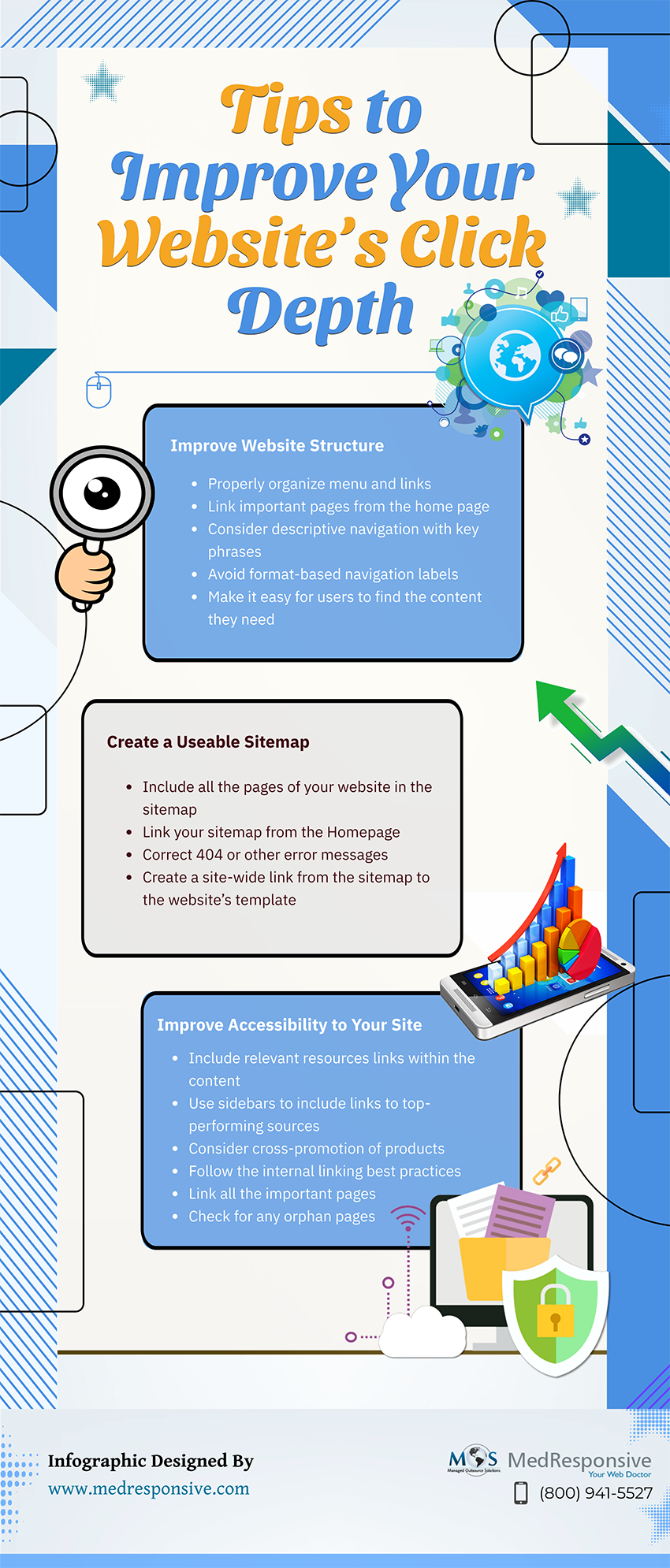Click depth is the number of clicks it takes users to reach a specific page, starting from the homepage. It really matters whether it is easy for your visitors to easily view your web page content. The more links a visitor must click through to access a page, the higher the page’s click depth. Pages with lower click depth values tend to rank better in search results. The homepage is the most linked and valuable page, and the most authoritative one, and can be assigned a click depth level of zero. An ideal click depth count can be 3, with a maximum of 4. Click depth rate of 5 or above can make it difficult for Google to crawl the page. Without crawling the page, Google won’t be able to index it, resulting in your web pages not appearing in any search results, which brings no added value.
In a 2018 Google Webmaster Central hangout, the company’s senior Webmaster Trends Analyst John Mueller said, “Google gives more weight to pages that are a single click away than those that are multiple clicks away. Pages with lower click depth values tend to rank better in search results.” Click depth is a ranking factor, as it has a role to play in helping or preventing people from finding information easily. Google uses this ranking factor to identify which pages are important. It’s also connected with how far Google will crawl a website.
Creating a visitor sitemap, mainly with a link in the website footer can work better to lower your website’s average click depth. The sitemap is the first step in building a conversion-optimized website. A sitemap is a page on your site, where you, your visitors and search engines can get to all the pages on your site. Businesses can rely on a professional search engine optimization company to optimize their website and achieve better search engine rankings.
Check out the infographic below





